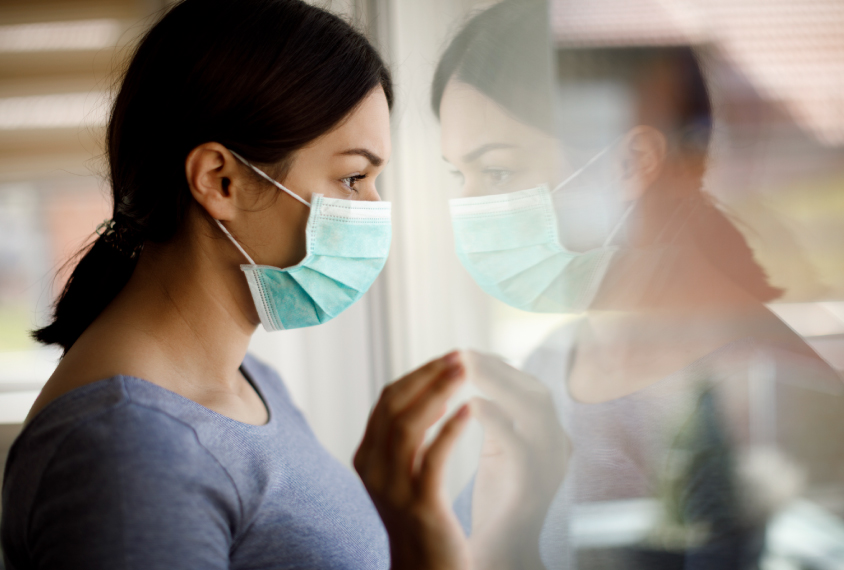Intellectually or developmentally disabled New Yorkers living in group homes may be more likely to contract and die of COVID-19 than those in the general population, according to a new study of more than 20,000 group-home residents1.
The study captures only a subset of New York’s group-home residents and doesn’t account for demographic differences, such as race and age, that may be driving the disparity. Like many coronavirus studies, it also likely excludes many asymptomatic individuals and those who were never tested.
“It’s imperfect data,” says co-investigator Margaret Turk, professor of physical medicine and rehabilitation at SUNY Upstate Medical University in Syracuse, New York. “And yet it is important information because whether or not you like the numbers, it does tell a story.”
Previous research suggests that intellectually or developmentally disabled people may be more vulnerable to COVID-19. According to an analysis of National Center for Health Statistics data in April, adults with intellectual or developmental disabilities are more likely than those without to die from pneumonia, a frequent complication of COVID-19. Another survey found higher rates of comorbidities linked to more severe COVID-19 cases, including respiratory diseases, among intellectually or developmentally disabled people2. It also found that intellectually or developmentally disabled individuals younger than 75 with COVID-19 are more likely to die than their nondisabled peers with the virus.
“There’s obviously something going on here that’s very different from the general population and very disconcerting,” says Scott Landes, associate professor of sociology at Syracuse University and co-investigator of the two studies, published in May and June in Disability and Health Journal.
Many intellectually or developmentally disabled adults live in congregate settings such as group homes and residential facilities, which feature shared common spaces, rotating staff and little room to isolate infected residents.
“They may not be able to practice physical distancing, they may not have access to appropriate PPE [personal protective equipment], and they may have the need for personal assistance,” says Coleen Boyle, adjunct professor at the Center for Leadership on Disability at Georgia State University in Atlanta, who was not involved with the research. “That really makes them vulnerable.”
Capturing cases:
To gauge the toll of the virus on intellectually and developmentally disabled group-home residents, Turk, Landes and their colleagues studied COVID-19 diagnosis and death data from New York Disability Advocates, a group of service providers that run group homes for intellectually and developmentally disabled New Yorkers. The researchers compared the proportions of confirmed COVID-19 cases and deaths among residents of the participating homes — about half of all New York state group-home residents — with data on the general population from the New York State Department of Health.
They found a coronavirus case rate of 7,841 per 100,000 group-home residents — four times the rate for New York state overall. Of the group-home residents who tested positive for the virus, 15 percent died, compared with 8 percent of all New Yorkers with a confirmed COVID-19 diagnosis. The team found a mortality rate of 1,175 per 100,000 group-home residents, which dwarfs the state’s COVID-19 mortality rate of 151 deaths per 100,000 people.
These differences were more pronounced for group-home residents in and around New York City, where COVID-19 hit hardest.
But it’s difficult to determine whether the group-home residents’ increased coronavirus risk is due to their living situation or their disability, says Lisa Croen, senior research scientist at the Kaiser Permanente Division of Research in Oakland, California.
“These two populations are really apples and oranges, so it’s very hard to compare,” says Croen, who was not involved in the research.
Residents at risk:
The findings are not surprising to advocates, group-home residents and administrators.
Because they live with housemates and work with staff they haven’t chosen, group-home residents aren’t able to protect themselves from the coronavirus as well as people living in their own homes or apartments can, says Zoe Gross, Director of Operations at the Autistic Self Advocacy Network.
“We were told to self-isolate, not congregate in large groups,” she says. “A lot of the people in these group homes have been denied the opportunity to do any of those things.”
When COVID-19 swept through a Long Island, New York, group home for intellectually and developmentally disabled adults, there was only one option for resident Teresa Lowther: The 52-year-old self-isolated in her bedroom for two weeks. But that did not keep her from contracting the virus. For her, it meant a week of fever and splitting headaches; other housemates dealt with more severe complications, including breathing problems. Staff helped as much as they could from a distance, she says, bringing in meals and doing residents’ laundry.
“That was nice, but it was a real pain being stuck in your room,” Lowther says.
At AABR, a New York disability services provider that operates 23 group homes, about 70 of the 165 residents have tested positive for the virus, says executive director Libby Traynor. A page on the services provider’s website commemorates the residents and staff who have died from the virus. Some had lived at AABR homes since the 1970s.
“It’s an empty bed, literally. An empty place at the table,” says Traynor of the losses. “It’s really like losing a family member.”
Turk and Landes say they’re planning further analyses of the New York Disability Advocates data, including a look at how age, race, pre-existing conditions and living arrangements may have affected residents’ experiences with the virus. They’re also calling on the New York State Office for People With Developmental Disabilities to release COVID-19 case and death data for all the state’s group homes — information they say will be essential for planning for this fall and beyond.
“States, you’ve got to show your data,” Landes says. “We need to know what’s going on.”





